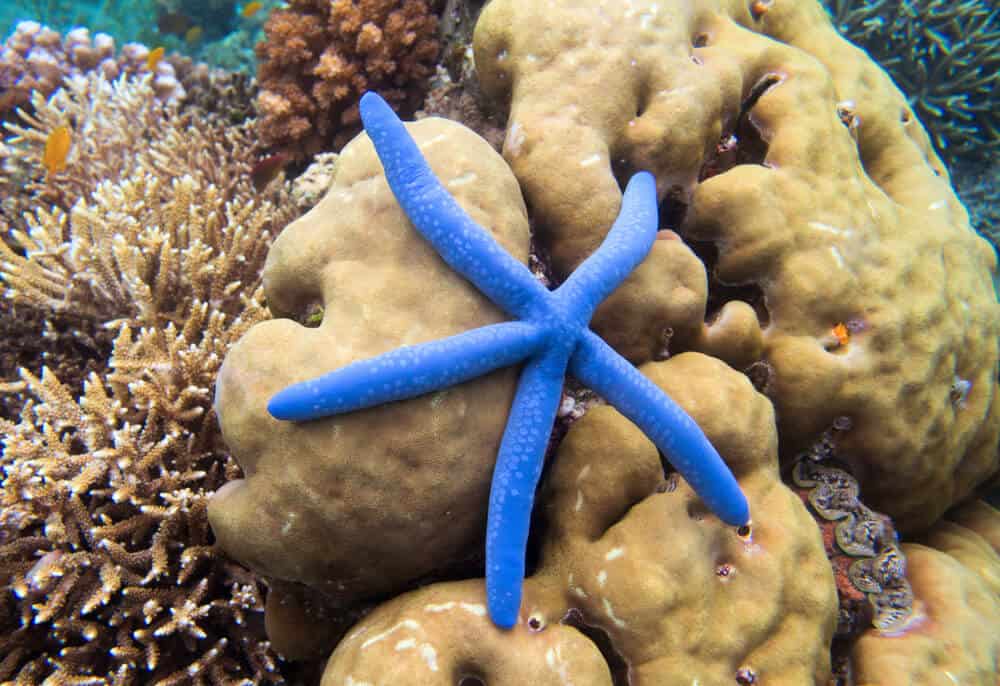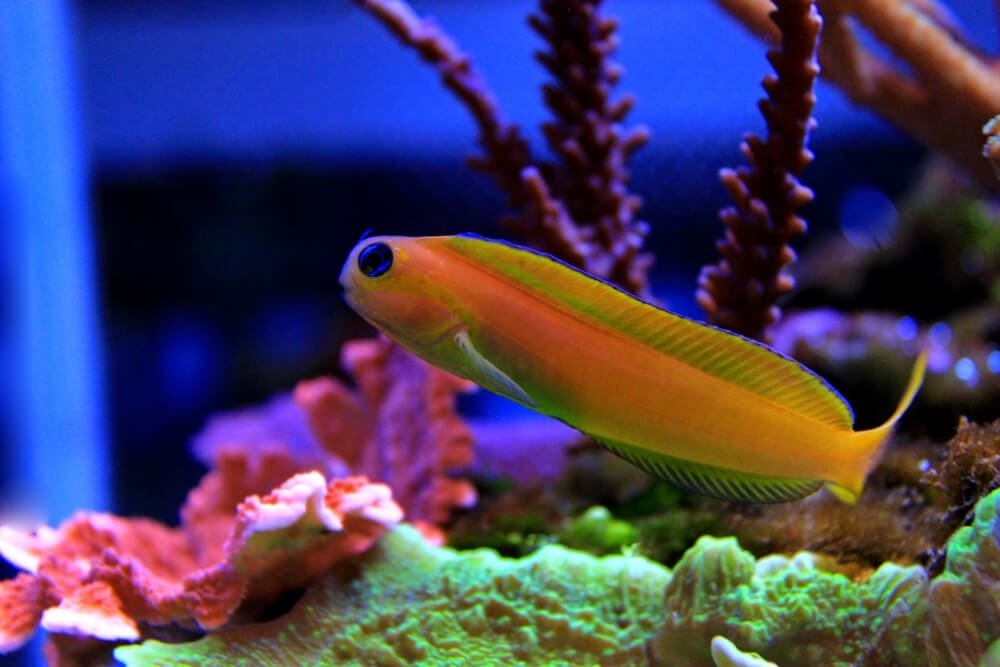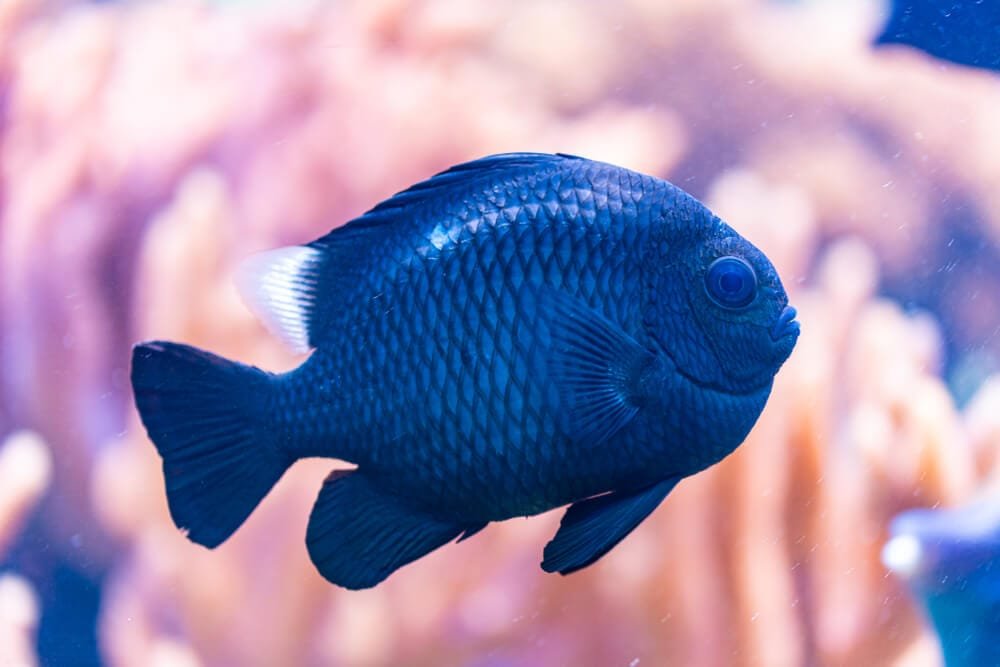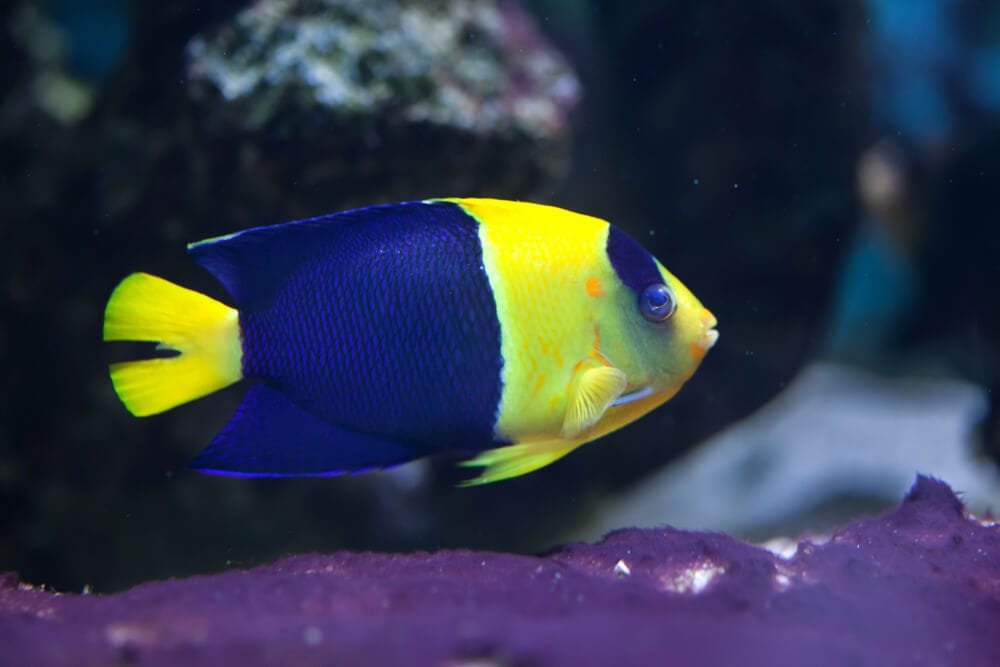The starfish is one of the first animals that most children discover and learn in school. It is also a famous sea creature because of its beauty. It is probably the favorite of most people who visit aquarium exhibits. You’ve probably been wondering how this magnificent creature lives and would ask the question: What do starfish eat?
Also known as sea stars, they are omnivorous, which means they eat animals and plants. Also, their source of food would depend on which part of the water they live in.
Believe it or not, there are 2,000 species worldwide, each with different shapes, sizes, and colors. They are also different from other marine animals like fish in eating, moving, and regenerating.
Furthermore, starfishes have other incredible features, even without bones and brains. It includes having the ability to see through their arms (their arms have eyespots that are delicate to light), their nervous system is complex.
They are able to throw out their stomach, which they use to envelop their prey.
If you are fascinated with what do starfish eat and want to see them in your aquarium, read through this article, know more about them, and get deeper into what they eat and how they process food in the ocean and aquarium.
Overview
Starfish come from a large group of marine animals called Echinoderms. This large group has 7,000 species in total and consists of sand dollars, sea urchins, stone lilies, and sea cucumbers; they all have spiny and hard skins.
In addition, some of their characteristics include radial symmetry ( which means they have even limbs and body) and tube feet. Technically, these are not fishes, so the more accurate name for them is sea stars.
Sea stars do not use blood but seawater to process the nutrients inside their body system. They do not have gills, scales, or fins, but their tube feet are responsible for exploring around.
These small feet are located underneath their bodies, with over 15,000 of their pressurized feet let them quickly move at nine feet per minute.
To elaborate further, sea stars specifically came from the Asteroidea group; this term was derived from a Greek word that means ‘form’ and ‘aster,’ since they resembled an aster flower.
The majority of their kind have radial arms, 5 in total, but some of them can possess up to 40 arms. Some of their incredible abilities are regenerating their lost extremities, and some can even restore a new body.
They intentionally lost their limbs to respond to danger and to free themselves from being exposed to high temperatures for the longest time.
Moreover, they can reach 9.4 inches in length and weigh as heavy as 11 pounds. Their average lifespan is from 5 to 35 years which depends on the kind of species and environment.
It is also interesting to know that Echinoderms have no terrestrial or freshwater members.
Despite being the oldest phylums of animals, they remained in sea waters or oceans for more than 500 million years.
Starfish Survival
Indeed, starfish are unique and beautiful creatures that eat from the inside and without a brain.
Because of their slow movement and inability to protect themselves, they are preyed on by animals like crabs, harlequin shrimp, seabirds, fish, sharks, and even humans.
Moreover, they can be threatened by diseases, humans, and pollution. Their slow movement can expose them to different risks like being carried to the coast, where they can not escape or return fast to the water.

How Do Starfish Eat?
Back in 2013, scientists have released information on how these sea stars eat. They have discovered a molecule that allows these creatures to perform remarkable methods of feeding in the world.
The feeding process starts when a starfish expel its stomach from its mouth and digest its prey like clams and mussels.
The tissue of their prey is digested partially and externally before producing a chowder soup-like and pulling back into the different digestive glands, which is 10 in total.
When a starfish likes to consume mussels, clams, or other mollusks with a double shell, they utilize an enormous suction power from their tube arms and feet to split and open the shell slightly.
You can say that bivalves or mollusks have a strong abductor muscle (the one that holds the closed-shell). Still, it is incredible to know how a fragile sea star manages to eat them.
Some mollusks, such as scallops, respond to danger by clapping their shells and swim away to safety, especially if they sense a starfish nearby. Other prey such as cockles would quickly kick their lengthy foot to escape. But most of the mussels, clams, and oysters do not get the chance to escape and get stuck in a place instead.
Typically, they are grouped to protect themselves; there is a chance that a hungry starfish will wander and decide to attack. No wonder scientists took a lot of years to find out their eating process since their mouth is not visible.
Starfish Eating Process
They have two stomachs and two mouths that include the one they use to extend outward to catch food, which is located underneath their body system.
Their arms let them feel their food around them, and it also allows them to catch and hold their prey or food. Additionally, the creature’s movement serves a significant role in having a successful eating process. It lets them discover a variety of foods.
Once they catch a shell, they will make a small opening to allow their stomach to prey on the shell, and it will secrete acids for digestion. After the absorption of the food, the stomach will pull back (known as the cardiac stomach) into the system, and digestion happens in the other stomach (known as the pyloric stomach).
Through this process, they can manage to process foods that are bigger than their tummies.
Aside from bivalves or mollusks, they are also famous for feeding corals, sponges, and other organisms that are not moving. An example is the Crown of Thorns Starfish, which is known to consume coral polyps.
But because of climate change and the absence of ordinary predators, their population has been uncontrollably exploding for many years. They usually creep to healthy coral, expel their tummy out, then proceed to digest polyps and leave a space for algae to enhance production in their territory.
Although they are known for their beauty, these little stars can be dangerous too due to their spikes which are venomous and poisonous.
Starfish can harm divers by stinging through their wetsuit, which can eventually cause a burning sensation because of venom that can be experienced for days.

What Do Starfish Eat In The Sea?
Like various fish species that consume different food options, starfish species also have other diets. Some are even known as scavengers, with similar eating behavior as fishes, and some are classified as predators.
Most species are carnivores and move so slow, so they usually find food that is easy to capture, particularly mollusks such as clams, oysters, snails, mussels, and fishes that are slow-moving.
In fact, one hungry starfish can consume more than 50 clams in a week.
Furthermore, some species would eat seaweed while others like to eat sea snails, sponges, sea urchins, hermit crabs, and plankton. When it comes to hunting, they are not speedy hunters, unlike some marine family members.
The majority of starfish are seen on the small rocks in the sea bed and ocean floors as most plants and species hold onto the rocks. They can catch their favorite food immediately.
They can also eat flesh. Some of them prefer to feed on materials in the sea that are decomposing. And they choose decomposing dead plants and animals as their favorite.
Overall, their diet preference depends on what kind of species they belong to. Still, most of them like to eat anything convenient and easily accessible.
What Do Starfish Eat In The Aquariums?
If you plan to own a beautiful creature like a starfish as a pet, it will not be easy as it requires more attention and advanced care.
For them to survive, you will need to set up a large tank (preferably 100 gallons), as most of the species will likely starve in tanks that are small without enough rock.
So, always ensure to have the correct aquarium size.
It is also crucial to do a thorough research of which kind of species you prefer before buying. There are scenarios that stores mislabel their names and can give you an incorrect species.
There are also species that are voracious carnivores, which can quickly eat the invertebrates of reef tanks. Thus, knowing the particular species you want is important.
Moreover, it is necessary to recreate their natural habitat and the environment when you want to pet them to make them feel comfortable and let them feed properly without stress.
It would be helpful to know their environments, such as sandy, rocky shorelines, coral reefs, seagrass meadows, or tidal pools.
Not everyone knows that starfish are pretty famous in aquariums, but they can not be just fed with fish flakes, like what most other aquarium fishes feed.
Different Diet In Aquarium
Obviously, when they are in aquariums, they have a different diet from the one they used to in the ocean since aquariums are a closed system that owners develop.
Typically, they need to eat for 2 to 3 days and are definitely not advisable to be kept by beginners. As mentioned, they are challenging and complicated to take care of.
You can quickly tell once your starfish is starving. Just place a slice of food that is easily visible and quickly accessible to them. It is quite simple to feed one; just place the food closer to them. If possible, put your pet above its food to ensure that it can catch it.
The majority of starfish species love to devour mollusks; you can put a few mussels or clams in your aquarium for them to enjoy and make them happy.
In addition, some species are algae eaters; they can feed algae inside your tank and frozen prawns, sponges (it is best if not frozen), and shrimps. Others can eat vegetables like kale, boiled spinach, and other sources of green vegetables.
Or, if you want to watch their diet and ensure that they get the best healthy diet, you can customize and make your own version of their foods.
Hence, it is best to do some research on their diet before you decide on getting one.

Different Starfish Species And Their Diet
Since starfish species’ diet varies, here is the list of different starfish species and their diet.
Crown Of Thorn Starfish

Crown of thorn starfish prefers to feed hard polyps and fast-growing corals such as staghorn corals.
Chocolate Chip Starfish

Chocolate chip starfish enjoy eating squid, chopped clams, shrimps, soft corals, sponges, and tubeworms. They can not be mixed with corals as they appear like chocolate chip biscuits.
Sand-Sifting Starfish

Sand-sifting starfish requires direct feeding through a sand bed. They like food such as mollusks, shrimp, and urchins, but they would rapidly wipe out waste and extra food.
They also need supplementation. Otherwise, they will get hungry.
Marble Sea Starfish

Marble sea starfish include many live rocks as they like to scavenge for waste and microbes. They are also highly active as well as prefer to live in a complex environment.
In addition, add flaked foods and shrimp to their diet as well.
Pacific Blood Starfish

Pacific blood starfish or also known as blood star, is a popular species that feeds on sponges, planktons, and bacteria. They have five slender and long arms.
Linckia Starfish

Linckia starfish do not need a lot of supplements in their diet when introduced into an aquarium. If they need food, just place clams or tablets underneath them.
Although this species can grow bigger, they are not difficult to manage.
Leather Starfish

Leather starfish feed on sponges, sea cucumbers, chitons, anemones, fish eggs, sea urchins, and hydroids.
Egyptian Starfish

Egyptian starfish feed on snails, algae, and sponges.
Sunflower Starfish

Sunflower starfish likes to eat sand dollars, sea cucumbers, crustaceans, clams, sea urchins, mussels, gastropods, and fish.
What Feeds On Starfish?
Starfish appear unappetizing and spiny for most animals to eat; that is why they only have few predators. Sea creatures such as pufferfish and triggerfish would like to try a bite.

A popular specialist predator called Harlequin Shrimp only feeds starfish. They are beautiful creatures that are well-liked shrimps for aquariums.
Most of these shrimp species are not picky with what species of starfish they like to eat; they can eat Chocolate Chip Starfish for over a week.
They usually come in pairs. The female and male will help each other to roll over the starfish, biting the arms and tube feet to ensure that it will not escape.
In addition, Harlequin Shrimp are the animal of choice for clearing an Asterina Starfish in an aquarium.

Frequently Asked Questions
Can Starfish Eat Humans?
Yes. Starfish prey on animals, including plants and organic remains. Primitive starfish eat by pushing food into their oral cavity.
Other starfish can turn their stomachs inside out, swallowing their prey, then digesting them in that position. Their bodies allow them to eat larger prey, even larger than them.
Most eat shells, but they also eat wounded fish and other sea creatures.
Generally, they eat anything that cannot fight back or run away. Other starfish are scavengers, feeding on dead sea animals, even humans.
Nevertheless, the way starfish digest food is slow, so they are not a real threat to humans. They usually bathe their food with digestive proteins and slurp the liquids. The human skin is thick, so they cannot digest it that easily.
Moreover, they will retract their bodies immediately when threatened.
Is It Okay To Pick Up A Starfish?
Yes, it is okay to pick up sea stars. However, it would be best to be careful not to hurt them and be very cautious that you do not get stung by venomous ones. Note that when you pick a starfish and bring one to open-air, it may die within five minutes because of intoxication.
Because sea stars breathe with their gills, exchanging carbon dioxide and oxygen using their skin surface.
However, when they are in the air, they cannot do so, so they die.
Even if you do not take one out of the sea, constant touching, picking, stacking, playing with them as if they were toys, or whatever type of handling you do can cause death. That is because they are not meant for that.
Moreover, they may die because of stress caused by changes in the environment. Even the most minor change can stress them heavily. Remember that sea stars are soft creatures born with fragile, small, and intricate bodies.
How Do Starfish Get Food?
Starfish are voracious carnivores, which means they will eat anything they can eat. However, they are not 100% carnivores, so they need to feed on organic detritus and algae to supplement their needs.
Most of the time, starfish prefer to feed on slow and static animals, such as sea urchins, oysters, clams, mussels, crabs, snails, worms, and more, whatever they can get.
Sometimes, they also eat wounded or dead animals and small fishes. As a matter of fact, they are referred to as sea decomposers.
Generally, you will find a starfish alone, living freely in muddy and sandy sea floors and crawling on shells and rocks.
They move very slowly on hard surfaces and attach themselves to them using their tube-like feet, which they also suck on their prey. Additionally, sea stars have many eyes found on their arms to see their environment and next prey.

Do Starfish Die If You Touch Them?
Like any other marine animal, sea stars are organisms you find in the sea or ocean. That is simply because they cannot breathe air.
Though that is common sense, some people still are lured to their color and beauty. For that reason, people tend to take them in the open air, forgetting how much damage it may cause.
As mentioned, starfish can die within five minutes in the air, but they may die even after only a minute. Moreover, if you take one out of the water repeatedly just for thirty seconds, they can still die.
How Long Does A Starfish Live For?
Starfish undergo a complex and unique lifecycle, where the young go through two different developmental stages before becoming adults.
Starfish go through spawning or external fertilization, where both female and male starfish produce sperm and eggs from the center of their bodies. Some of these sperm and eggs get in contact, thereby initiating fertilization.
While spawning, starfish change their body position so that their central bodies are raised over the substratum.
You will then see gametes floating in the water, forming a milky cloud of water on the ocean floor—different starfish manifest different development patterns but must exhibit the same theme.
After fertilization, they become symmetrical larvae, known as a bipinnaria. Then, these creatures turn into larvae/brachiolaria and fall on the seafloor after feeding on planktons for a few weeks.
Once settled, they metamorphosize into adults.
With all that said, how long do sea stars live? There are more than a thousand species of starfish in the ocean all over the globe. The most familiar ones are the five-armed starfish, but there are also sea stars with ten or more arms.
With that many species of sea stars, it is difficult to generalize their lifespan. Typically, older ones live longer as younger ones are more vulnerable.
In general, sea stars can reach 35 years, depending on the type and the environment they live in.
Final Words
Starfish is one of the most beautiful sea creatures on this planet. Although they are complicated to take care of, they are not fussy eaters as long as they are provided water of good quality. It is also crucial to explore and do research on different starfish species and their preferred diet.







